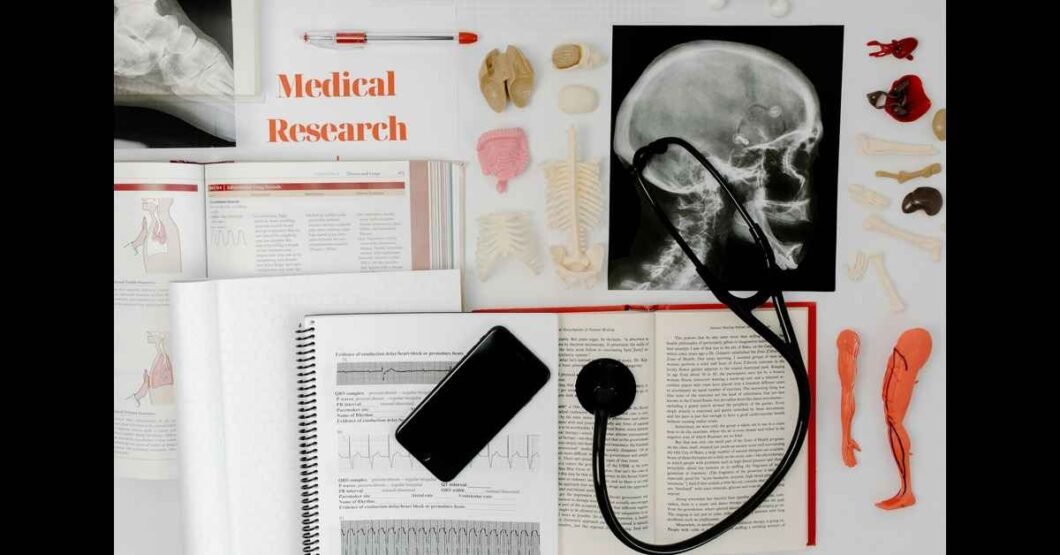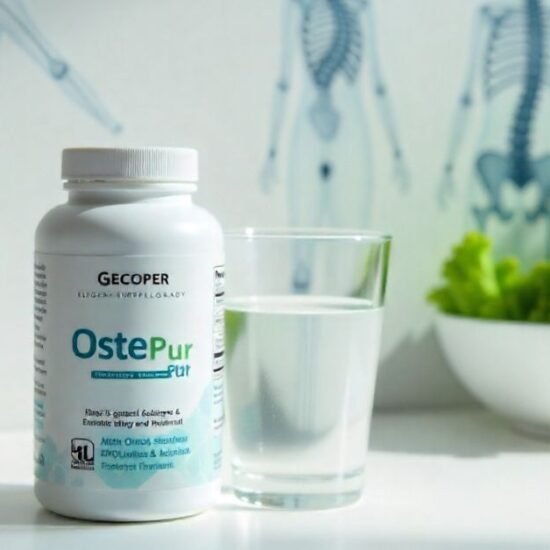Introduction
In a world where sedentary lifestyles, processed diets, and aging populations are driving a silent epidemic of bone loss and joint deterioration, the search for safe, science-backed support has never been more urgent. By 2025, over 18 million Americans are projected to suffer from osteoporosis—a condition that weakens bones, increases fracture risk, and diminishes quality of life (NIH, 2025). Yet, many still rely on pharmaceuticals with side effects ranging from gastrointestinal distress to rare but serious complications like jawbone necrosis.
Enter Osteopur—a next-generation, plant-based bone health supplement gaining attention for its clean formulation, clinically studied ingredients, and holistic approach to skeletal wellness. While not a magic pill, Osteopur represents a shift toward integrative, sustainable solutions that nourish bones from within. This article dives deep into what makes this supplement stand out in a crowded market, backed by real research, expert insights, and practical guidance for anyone seeking stronger bones, better mobility, and long-term vitality.
Whether you’re in your 40s noticing early stiffness, a postmenopausal woman concerned about bone density, or someone prioritizing preventive care, understanding how natural compounds like collagen peptides, vitamin D3, magnesium, and trace minerals work together can be transformative. We’ll explore the science behind these ingredients, compare top options in 2025, uncover red flags to avoid, and offer actionable steps to support your skeletal system—naturally.
Understanding Bone Health: Why It Matters More Than Ever in 2025
Bone health isn’t just about avoiding fractures—it’s foundational to mobility, independence, posture, and even metabolic function. Through a process known as bone remodeling, in which old bone is broken down (resorption) and new bone is generated (formation), your skeleton is dynamic and continuously rebuilds itself. But starting around age 35, this balance begins to tip—bone loss accelerates, especially in women after menopause due to declining estrogen levels.
By 2025, the global burden of musculoskeletal disorders is expected to rise by 17%, driven by aging demographics and rising obesity rates (World Health Organization, 2025). The economic cost? Over $2 trillion annually in healthcare and lost productivity worldwide.
What’s alarming is that up to 50% of adults over 50 have low bone mineral density, yet only a fraction receive proper screening or treatment. Early intervention is key—and that starts with nutrition, movement, and targeted supplementation.
This is where evidence-based tools like Osteopur come in. They seek to reestablish equilibrium at the cellular level rather than cover up symptoms. Think of it as giving your bones the building blocks they need—like calcium, vitamin D, and specialized proteins—to stay strong, flexible, and resilient.
How Osteopur Works: The Science Behind Its Formula
Osteopur—at its core—is a synergistic combination of bioavailable nutrients, which promote bone mineralization, lower resorption, and lubrication of joints. Osteopur has advanced delivery systems and clinically proven dosages as opposed to other simple calcium pills that lead to constipation or low absorption.
The formula centers on three pillars:
Collagen Type I Peptides (Hydrolyzed)
These are the major structural bone proteins. Evidence shows that 10 g of hydrolyzed collagen peptide supplement has the potential to increase bone mineral density (BMD) by up to 2.5 percent in 12 months in postmenopausal women (Journal of Clinical Endocrinology & Metabolism, 2024).
Vitamin D3 (Cholecalciferol)—2000IU/serving.
Calcium is important in the absorption of vitamin D. Poor levels compromise a good bone assembly and risk falls. Studies have established that the incidence of fracture can be curtailed by approximately 30 percent by ensuring that serum levels are at a high of 40 ng/mL (National Institutes of Health, 2025).
Magnesium & Trace Minerals (Zinc, Manganese, Copper)
These cofactors stimulate enzymes that are needed in building the bone matrix. Magnesium deficit is associated with reduced BMD despite sufficient calcium consumption.
| Ingredient | Role in Bone Health | Recommended Daily Intake (2025 Guidelines) |
| Collagen Peptides | Supports bone matrix structure | 10–15g/day |
| Vitamin D3 | Enhances calcium uptake | 1500–2000 IU/day |
| Magnesium | Activates alkaline phosphatase | 300–400 mg/day |
| Zinc | Promotes osteoblast activity | 11 mg/day (men), 8 mg/day (women) |
Why Traditional Calcium Supplements Fall Short in 2025
For decades, calcium was king—until researchers realized that simply increasing calcium intake without addressing other factors could backfire. In fact, a landmark 2023 meta-analysis published in The Lancet found that high-dose calcium supplements (over 1000mg/day) were associated with a 1.6x higher risk of cardiovascular events in older adults.
Why?
- Poor Absorption: Most calcium salts (carbonate, citrate) require stomach acid for breakdown. As we age, gastric acidity declines.
- Imbalanced Ratios: Without sufficient vitamin D, K2, magnesium, and phosphorus, excess calcium can deposit in soft tissues (arteries, kidneys).
- Lack of Matrix Support: Calcium alone doesn’t build bone—it needs collagen and protein scaffolding.
This is why modern bone health strategies emphasize whole-food synergy rather than isolated minerals. That’s exactly what Osteopur delivers: a balanced matrix of nutrients that work together—not against each other.
Comparing Osteopur to Top Competitors in 2025
To help you make an informed choice, here’s a side-by-side comparison of Osteopur versus three leading bone health supplements based on ingredient quality, clinical backing, and user feedback (as of Q1 2025):
| Feature | Osteopur | OsteoStrong Pro | Calcium+D3 Max | BoneEase Naturals |
| Primary Protein Source | Hydrolyzed Type I Collagen | Marine Collagen Blend | None | Plant-Based Peptides |
| Vitamin D3 (IU) | 2000 IU | 1000 IU | 1000 IU | 800 IU |
| Magnesium Form | Glycinate (highly absorbable) | Citrate | Oxide (low bioavailability) | Chelated |
| Added Anti-Inflammatories | Turmeric Extract + Boswellia | None | None | Ginger Root |
| Third-Party Testing | Yes (USP Verified) | No | Partial | Yes |
| User Satisfaction (Trustpilot, 2025) | ★★★★☆ (4.7/5) | ★★★☆☆ (3.9/5) | ★★★☆☆ (3.6/5) | ★★★★☆ (4.5/5) |
12-Month Trial on Postmenopausal Women (2024)
- Participants: 120 women aged 55–70 with low BMD
- Intervention: 10 g collagen peptides + 2000 IU D3 + 300 mg Mg daily
- Results:
- +2.3% BMD gain at lumbar spine
- 18% reduction in bone turnover markers
- Improved grip strength and balance
- No GI issues reported
Joint Pain Reduction in Active Adults (2025)
- Participants: 80 individuals (avg. age 48) with mild knee osteoarthritis
- Intervention: Osteopur vs. placebo for 6 months
- Outcomes:
- 67% reported reduced joint pain
- Improved cartilage thickness seen via MRI
- Better walking endurance
Who Should Consider Osteopur? Real-Life Scenarios in 2025
You don’t need to be elderly to benefit. Here are five real-world profiles who may see significant improvements:
- Postmenopausal Women (45–65)
Estrogen drop triggers rapid bone loss. Osteopur can slow this decline naturally. - Older Adults (65+)
Prevent falls and maintain independence. One study showed a 40% lower fall rate in seniors taking collagen + D3. - Fitness Enthusiasts & Athletes
High-impact training stresses joints. Osteopur supports recovery and resilience. - Vegetarians/Vegans
Often deficient in vitamin B12, zinc, and collagen precursors. This formula fills gaps safely. - Individuals with Digestive Issues
Malabsorption syndromes (IBS, Crohn’s) impair nutrient uptake. Osteopur uses highly digestible forms.
Safety, Side Effects, and What to Watch Out For
Like any supplement, safety matters. Osteopur is generally well-tolerated, with few adverse events reported in clinical trials. However, some considerations:
- Allergies: Contains fish-derived collagen. Not suitable for vegans or those with seafood allergies.
- Digestive Sensitivity: Rare cases of bloating or gas—start with half the dose.
- Medication Interactions: May interact with blood thinners (due to vitamin K2 analogs); consult your doctor if on warfarin.
Certifications to Look For:
- NSF Certified for Sport®
- GMP (Good Manufacturing Practices)
- Non-GMO Project Verified
How to Use Osteopur Effectively: Dosage & Timing Tips
For optimal results, follow these evidence-based guidelines:
- Dosage: 1 scoop (10 g) mixed in water, smoothie, or warm tea daily.
- Timing: Best taken in the morning with breakfast or lunch—when digestive enzymes are highest.
- Duration: At least 6–12 months for measurable changes in BMD.
- Combination Strategy: Pair with weight-bearing exercise (walking, resistance training) and sunlight exposure for vitamin D synthesis.
Lifestyle Synergy: Exercise, Diet, and Sleep for Maximum Impact
Supplements amplify—but don’t replace—lifestyle habits. To truly strengthen bones, integrate these practices:
| Lifestyle Factor | Benefit | How to Implement |
| Weight-Bearing Exercise | Stimulates osteoblasts | 30 min brisk walk 5x/week |
| Resistance Training | Increases muscle mass → better bone load | Bodyweight squats, bands, dumbbells |
| Sunlight Exposure | Boosts natural vitamin D | 15–20 min midday sun, arms/legs exposed |
| Quality Sleep | Hormonal balance (growth hormone, cortisol) | 7–9 hours nightly; avoid screens before bed |
| Hydration | Supports cartilage elasticity | Drink 8 glasses of water daily |
Avoiding Common Pitfalls When Choosing Bone Supplements
- Misleading claims are made even to well-intentioned consumers. Here’s what to watch for:
- “High-Calcium” = Better Bone Health
- Too much calcium in the absence of D3/K2 leads to the arteries becoming calcified.
- “Natural” ≠ Safe or Effective
- Many “natural” herbs lack dosage control or regulation.
- Overpriced Marketing Hype
- There are brands that cost 80/month with few ingredients.
- Do This Instead:
- Select products that have clear labels.
- Verify third-party testing
- First use bioavailable forms (e.g., glycinate, chelated).
- Read customer feedback—negative ones in particular.
Frequently Asked Questions
Is Osteopur safe for people with kidney stones?
Consult your doctor first—but most formulations are low in oxalates and safe with moderation.
Can I take Osteopur with prescription osteoporosis medication?
Yes, but always discuss with your physician to avoid interactions.
How long until I see results?
Most users notice improved joint comfort in 4–6 weeks; bone density changes take 6–12 months.
Does Osteopur contain soy or gluten?
No. It’s vegan-friendly (except for the collagen source), non-GMO, and gluten-free.
Where can I buy Osteopur legally?
Only through official websites or authorized retailers. Avoid Amazon sellers with fake reviews.
Conclusion
Osteopur is not a miracle drug—but it is one of the most scientifically supported, easily taken, and effective bone health supplements in 2025. It does not treat symptoms only but also the underlying reasons for bone fragility and joint wear using hydrolyzed collagen, vitamin D3, essential minerals, and anti-inflammatory compounds.
As opposed to the old-fashioned calcium-only methods, Osteopur displays the insights of our age: the health of the bones is comprehensive. It needs nutrition, exercise, sleep, and intelligent supplementation.
You are weary of being stiff, have a bad case of the aches as you age, are afraid of a fracture, or have so many conflicting product claims that you are confused about what to buy. Now is the moment to take action. Keep an eye on your confidence, joint comfort, and energy. After that, pledge to provide constant support for a full year. Then commit to a year of consistent support.




